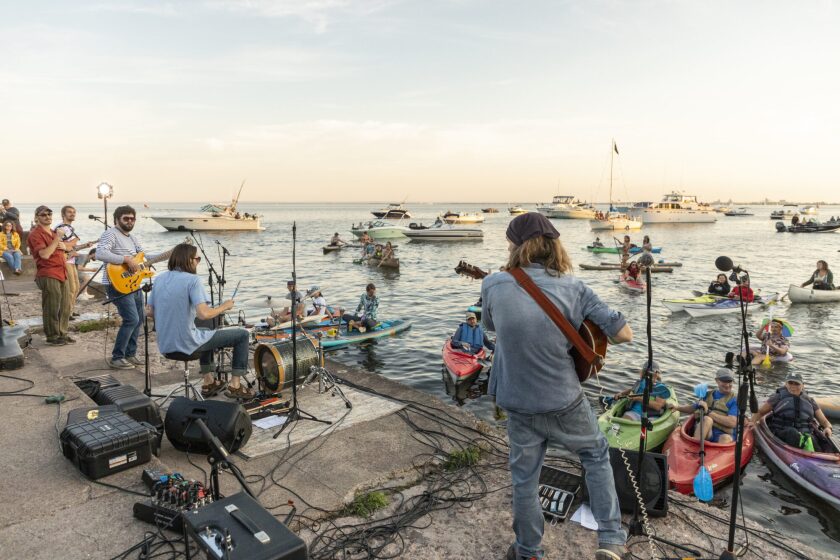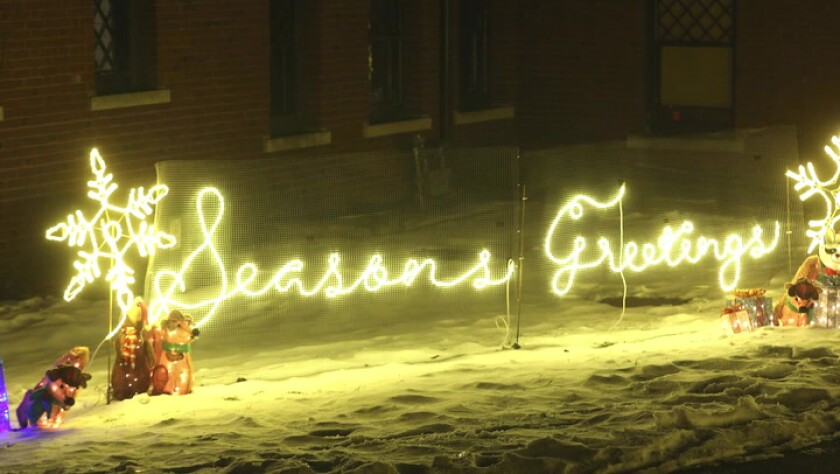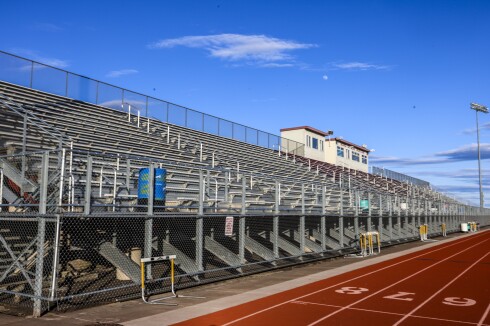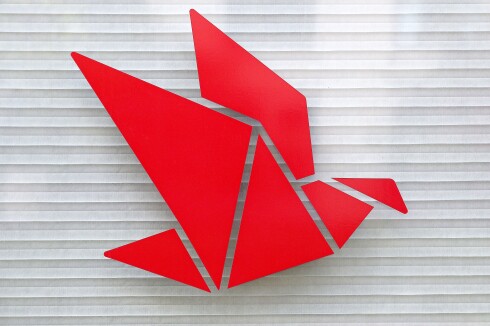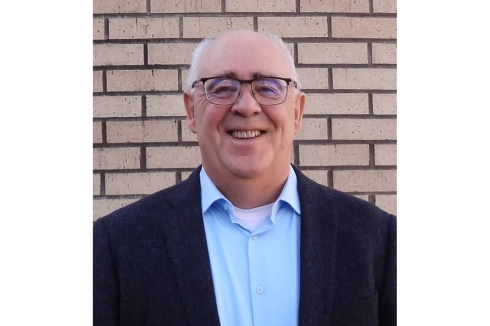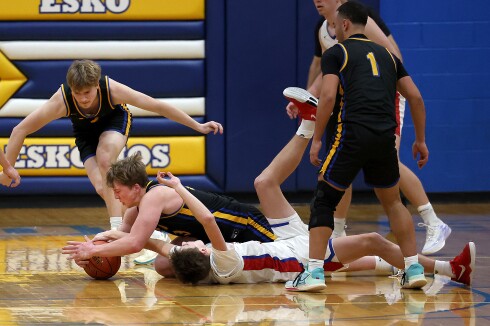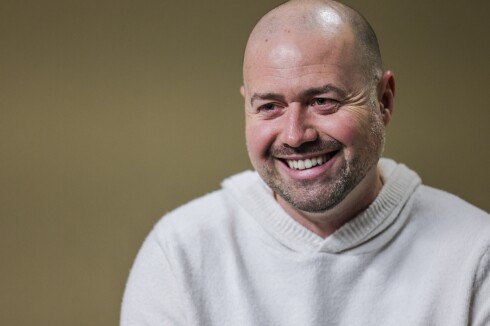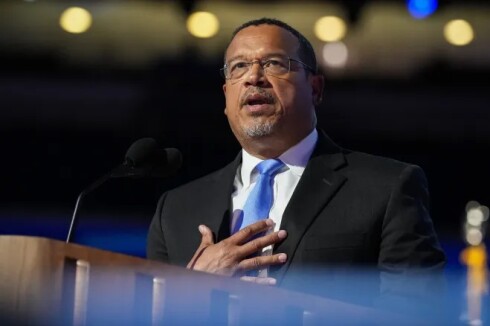DULUTH — From spring 2020 until fall 2023, a sign on the Glensheen grounds promised to answer a question the mansion's builder, Chester Congdon, would have been surprised it was ever necessary to ask.
"Why a shark?"
ADVERTISEMENT
The sign explained that the 24-foot wood-frame shark sculpture perched on the shore was in place "as a reminder of our duty as Lake Superiorians to keep these waters shark-free."
That wasn't the whole story. Here, for the first time, the life and unexpectedly belated death of Clark the Shark are recounted by those who knew him best. The story starts in the winter of 2019-2020, just weeks before the onset of the COVID-19 pandemic.
Dan Hartman, Glensheen director from 2014-2021: "Mayor Don Ness had made an ad (referring to) keeping Duluth shark-free ... and that was kind of a running joke around town at the time. Several of us had watched the documentary on the Fyre Fest that did not work out, and we thought it would be kind of a fun deal (to have a Fire Fest). I don't remember how it got to be a shark, but probably between myself and Jane Pederson, we made that up."
Jane Pederson Jandl, Glensheen marketing director from 2016-2022: "We were always trying to think about what we could do that would be outside of the box. Something that is going to, as we would say, break through the clutter. The Fire Fest was the idea that came to mind. We loved having bonfires on the estate, and we wanted to try to do something bigger."
Lynne Williams, chief marketing and public relations officer at the University of Minnesota Duluth (owner of Glensheen) from 2015-present: "I think that we need more creativity in this world. I think that people should be allowed to fail and have successes, and it takes throwing things at the wall to see what sticks and what doesn't. You know, when Concerts on the Pier was pitched, people didn't think that would work either."
Joel Vikre, designer and fabricator: "(Dan) was like, 'Hey, I've got this crazy idea! It's based on the Fyre Festival.' And I was like, the Fyre Festival ... in the media, with those documentaries? And he was like, 'Yeah, just like that one! We need a culminating object to burn, and I was thinking a shark.' After he appeared to be serious, in the way that Dan is serious about things, I was like, how big do you want it? He said, 'As big as possible.'"
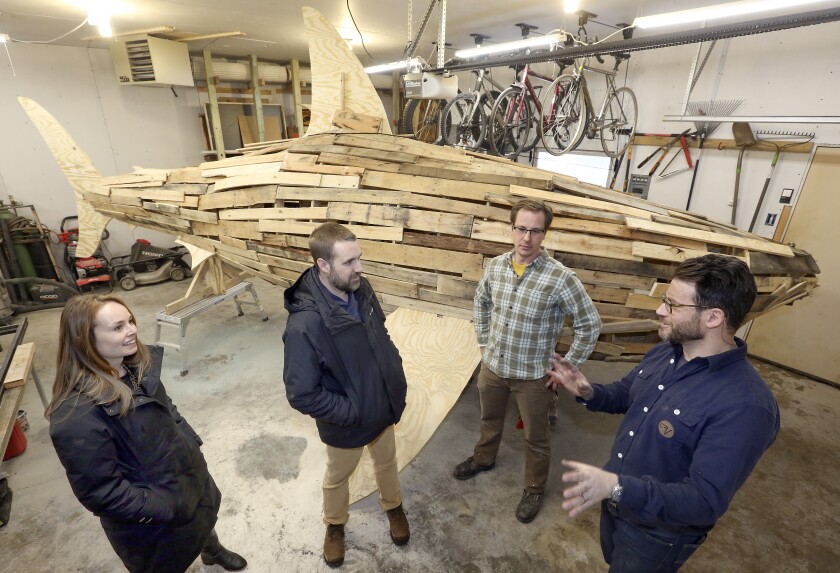
Dan Hartman: "The idea was that we'd have the shark down by the shore of Lake Superior. It would be a controlled burn. We were going to have fire-based drinks, we were going to have fire pits around the property, we were going to have outdoor cooking stations."
ADVERTISEMENT
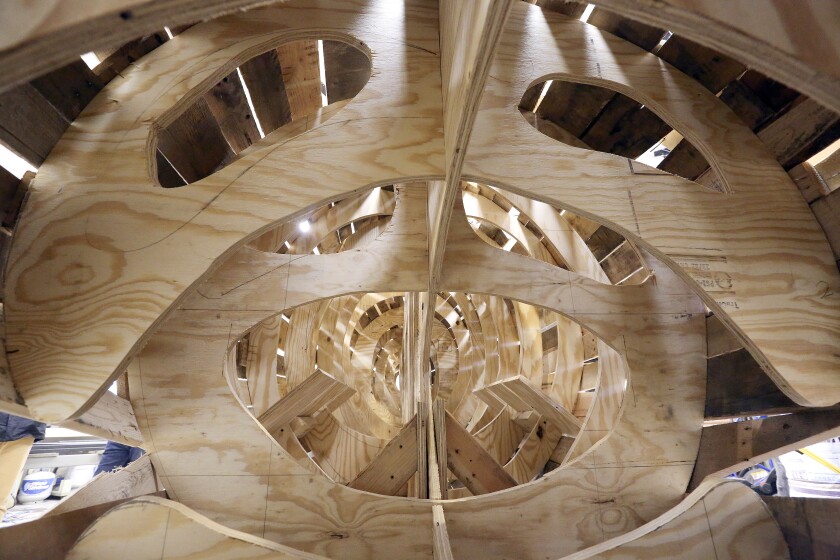
Joel Vikre: "The assumption was that the thing was only going to live for a week ... so we picked sheathing plywood — cheap three-quarter-inch plywood — for the skeleton, and then pallet wood for the skin. The thing was big enough that we needed a steel structure for it to stand on, so I just used some scrap metal that I had around. We welded up a frame for it to stand on."
Jane Pederson Jandl: "The rock beach is massive, and we were thinking that we were going to be able to contain people far away so that we could keep everyone safe and have this controlled burn on the estate. We had talked about needing to potentially get a barge to put it out on Lake Superior."
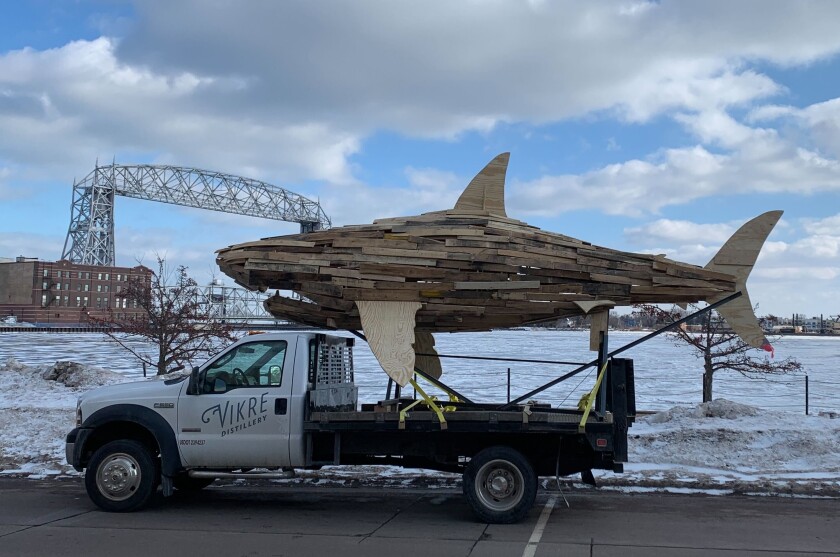
Joel Vikre: "We put it on top of the (Vikre) distillery flatbed truck. ... We took it on sort of a voyage. We went to the distillery; we went to Bent Paddle. We took it to the aquarium, and the aquarium director fed it a stuffed salmon."
Dan Hartman: "The tickets were on sale for a short period, and it was the most web traffic we ever had at Glensheen for a one-day sale. People clearly wanted to do this event."
Joel Vikre: "I had actually done some research on how to make the thing burn well. I had a whole plan with fuel and accelerants and things to burn quickly and evenly and thoroughly. I didn't want to have it burn out or just be this kind of lame display. I wanted it to be exciting. So I had a whole plan. And then, of course, responsible parties got involved and decided that it was not going to happen."
Jane Pederson Jandl: "In the end, the powers that be told us that burning a giant wood structure was not good."
Dan Hartman: "We did not get permission to burn the shark from a key source. ... Someone who had verbally given us permission changed their mind. What happened is, the event got so popular that the person changed their mind and they were more concerned."
ADVERTISEMENT
Jane Pederson Jandl: "We tried really hard to prove that we had safety precautions in place. We were sad, but we understood the decision."
Dan Hartman: "There was this moment with Jane and I in our office going, we're literally going to have to cancel Fire Fest. Jane's like, 'You've got to be kidding me.' I'm like, I'm not. She's like, 'You realize how ridiculous this sounds?' I'm like, I totally do. The hilarity of this was so great that there were folks in the Twin Cities who follow us on marketing, and they thought it was a publicity stunt."
Jane Pederson Jandl: "We had some folks from Explore Minnesota ask us if we had hired an (advertising) agency to help us."
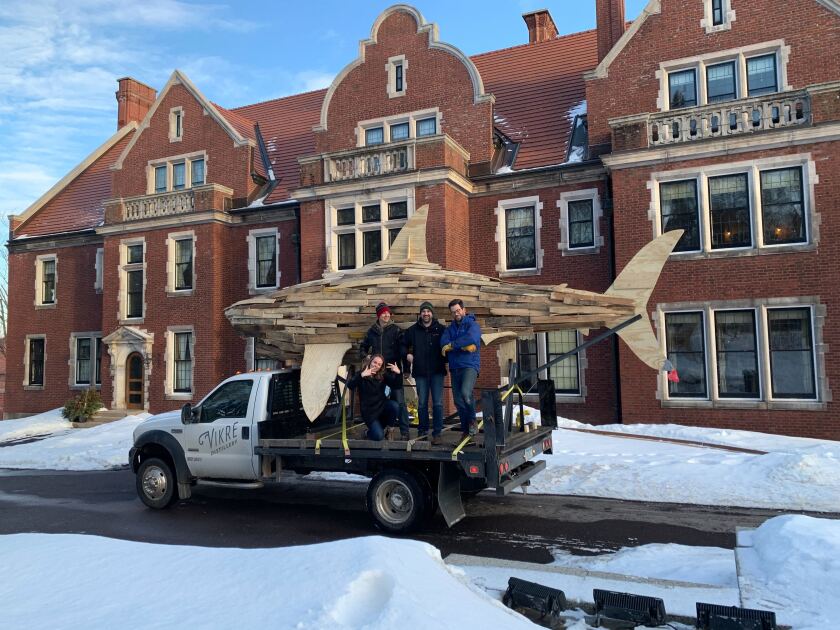
Joel Vikre: "I wasn't super surprised. I think probably if I were the fire marshal, and I saw ... in the newspaper, 'Glensheen to burn giant shark' ... the whole giant-ness of it, I think, was the concern."
Lynne Williams: "I'd like to think that If COVID hadn't hit two months later, maybe we would have tried to make another go at it ... The event itself (was) a great idea, had some good momentum, and hit some roadblocks both internally with the university and with the city and (it) just came down to a time for us to set this aside for now ... We knew we were going to do something with the shark, it was just a matter of what. Then, quite honestly, when COVID hit, (the shark) was the least of our priorities."
Dan Hartman: "So Clark the shark remained on the beach. And then we were like, 'Well, what are we going to do with the shark?'"
Jane Pederson Jandl: "We decided to turn Clark into lemonade from our lemons, and he became sort of a mascot for Glensheen."
ADVERTISEMENT
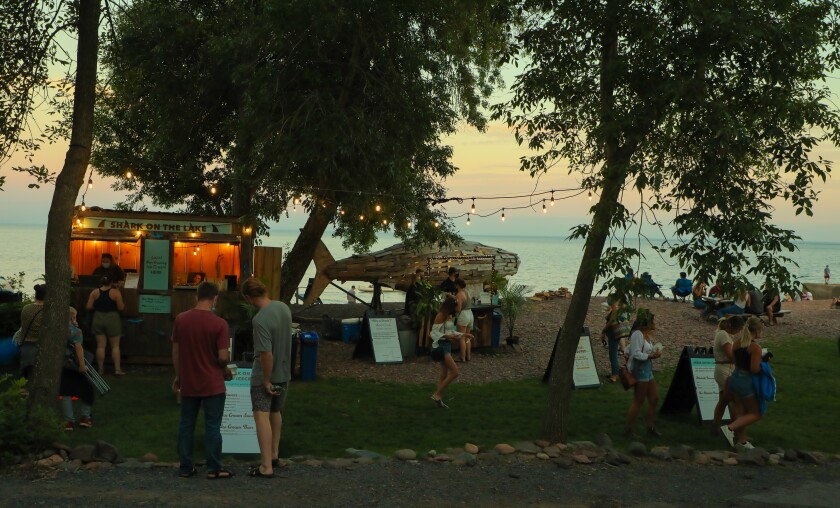
Dan Hartman: "Quickly, he became the most photographed thing at Glensheen. People driving boats would come by and look at the shark. So we made Clark the shark into a bar. It was the Shark Bar, and it was the only bar on the shore of Lake Superior where you could have a drink and actually sit on the rocks and enjoy the lake, and so that became its own thing for a number of years."
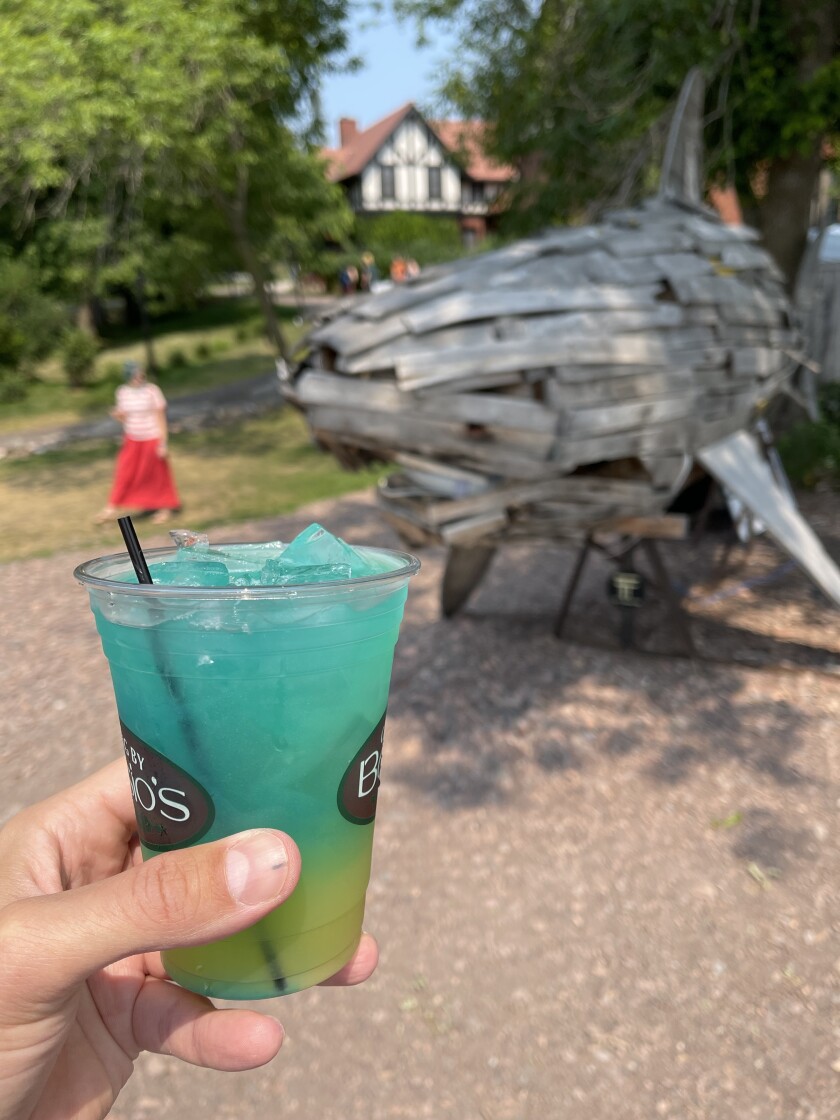
Emma Rothwell, Glensheen marketing associate from 2019-2020: "During that time, there were few bars or anything open in Duluth. Because it was COVID, it was a unique thing that this giant shark appeared and they were doing kind of a tiki bar."
Jane Pederson Jandl: "We just wanted to offer an opportunity for folks to come and enjoy Glensheen in a safe way. Opening the Shark Bar was one of the ways we could do that."
Emma Rothwell: "They had special shark drinks. They tried to make a whole thematic vibe around it."
Lynne Williams: "I was surprised, but the guests really seemed to like (the shark), and they took their pictures with it. There were people who would sort of fake with their head in the mouth of Clark ... it became something that was sort of an interactive guest experience."
Jane Pederson Jandl: "I monitored social media and Google reviews as part of my role, and Clark was always coming up in the pictures that guests were taking. It would be, like, the Breakfast Room and Clark."
Emma Rothwell: "(The shark) was a novel thing to have, but it didn't really make sense with the mission of Glensheen. It was just kind of this outlandish thing."
ADVERTISEMENT
Lynne Williams: "Part of what had made Glensheen successful is that they weren't a boring house museum. They were willing to step out of the box and be a little bit quirky, and this was one example of that."
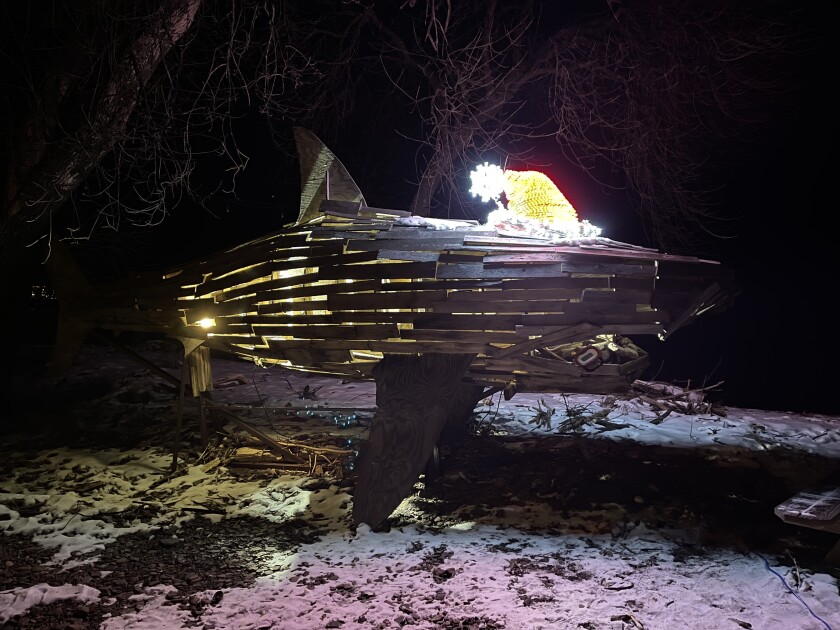
Dan Hartman: "Our entire (tourism) industry exists because something doesn't fit into the box. The very reason people visit Duluth and our region is Lake Superior. Why is that? Because it's an abnormally large fresh body of water. Nothing 'normal.' ... The entire point of why people (participate in) tourism is they're going somewhere that doesn't fit the mold. They're going somewhere different and fun, and I think Clark represents that element."
Joel Vikre: "In the end, probably a lot more people saw it than would have if it were just burned."
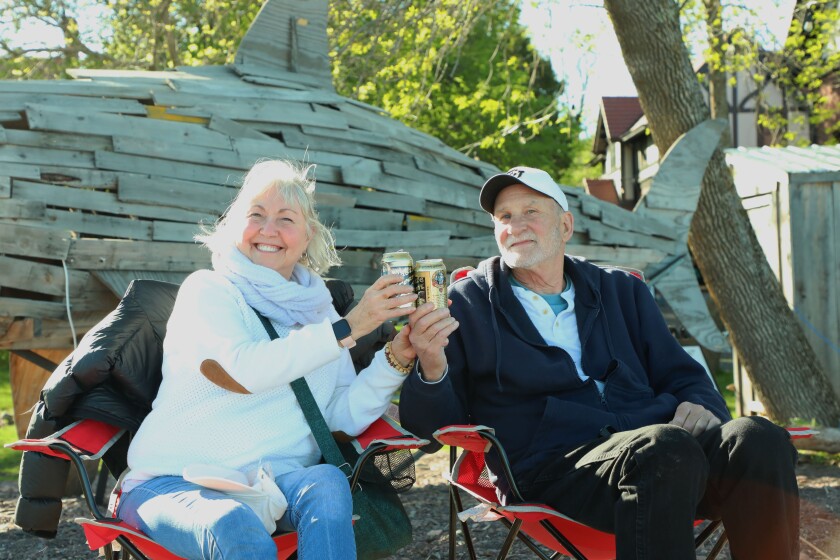
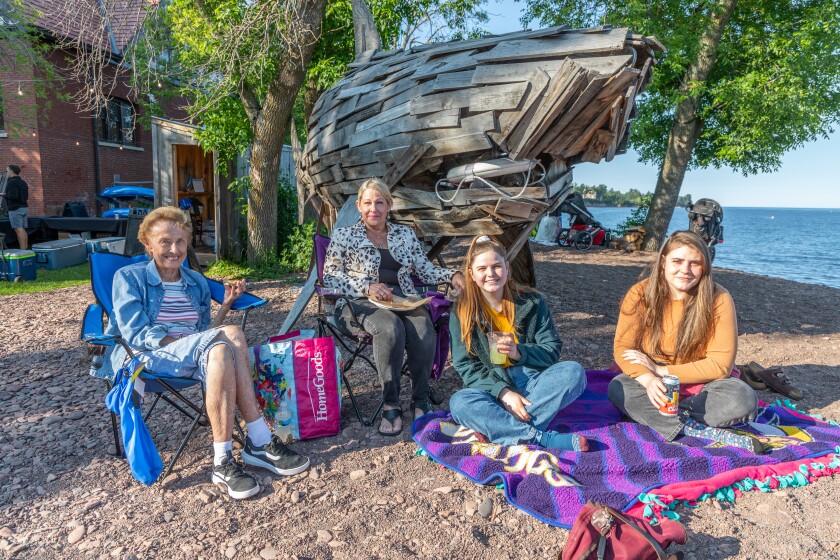
Lynne Williams: "I will own that I was telling them they had to get rid of Clark. It was falling apart. ... It was never built to withstand a year, let alone for years and winters and all of the elements that come on the shores of Lake Superior."
Joel Vikre: "We kind of threw it together, which is why it was so amazing that it lasted. ... I found out that the Glensheen gardener, Emily Ford, had been going down and nailing the planks back on after every major storm. For years, I thought it was just a miracle."
Lynne Williams: "Kids would climb on it, and I was concerned about the safety. I was concerned about the exposure to nails. It was rotting. It just literally was never intended to last that long."
Joel Vikre: "It was designed to last for three days. I would imagine it kind of fell to pieces once they began pulling. ... I did know they were going to take it down. They asked if I wanted to help, but I couldn't bring myself to (do) it."
ADVERTISEMENT
Lynne Williams: "I hope they took it apart and burned it. That's what I encouraged. I don't 100% know what the staff did with it, but I hope they had themselves a little staff bonfire and burned it up."
Dan Hartman: "It was kind of a weird ordeal, but a definite win down the road. ... It was just cool, and it was so funny to hear people going by on boats (saying) 'There's a shark!' It had so much wow factor."
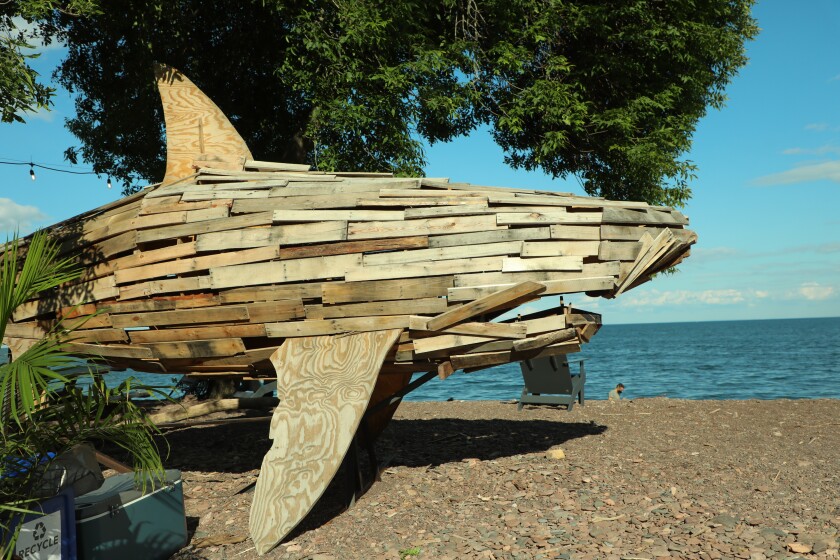
Jane Pederson Jandl: "The mantra that we had was to sort of throw spaghetti at the wall and not be afraid to try new things, not let perfection be the enemy of good. I think a lot of Glensheen's success came from that attitude."
Dan Hartman: "I remember I had someone who was trying to tell me that we needed to get rid of the shark because it wasn't historically connected to Glensheen. They (took) their lunch break at the table by the shark, and then she came back to me and she's like, 'OK, I get it.'"




